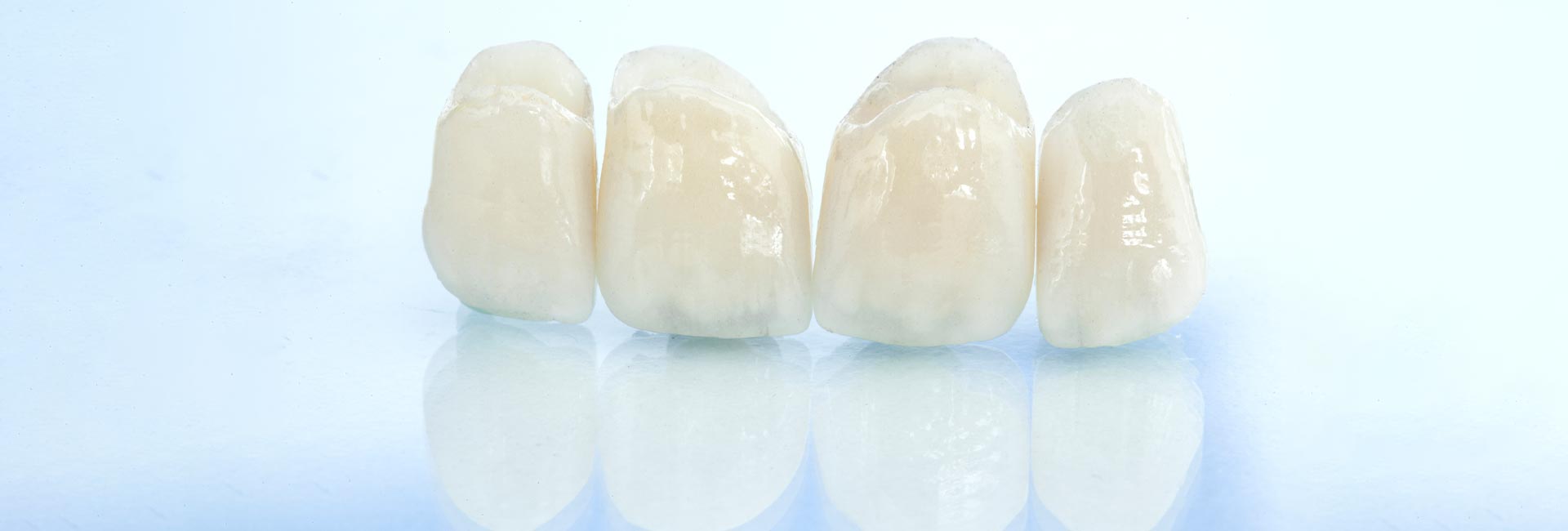A bright smile is an instant indicator of confidence and health. Yet even with the best care and preventive efforts, a tooth can be damaged or lost. Whether from decay, trauma, or another issue, dental health and integrity may be compromised. At Royal Dental Care, we can restore your teeth’ function, health, and appearance using dental crowns and bridges. Our expert staff has advanced training in restorative dentistry, and we use the latest technological advancements for improved accuracy and quality. We aim to create high-quality, aesthetically pleasing restorations to give every patient a complete, beautiful smile.
Why Choose Royal Dental
All-Porcelain Crowns For Natural-Looking Results.
Digital Impression System For Improved Accuracy.
Advanced Training In Restorative Dentistry.
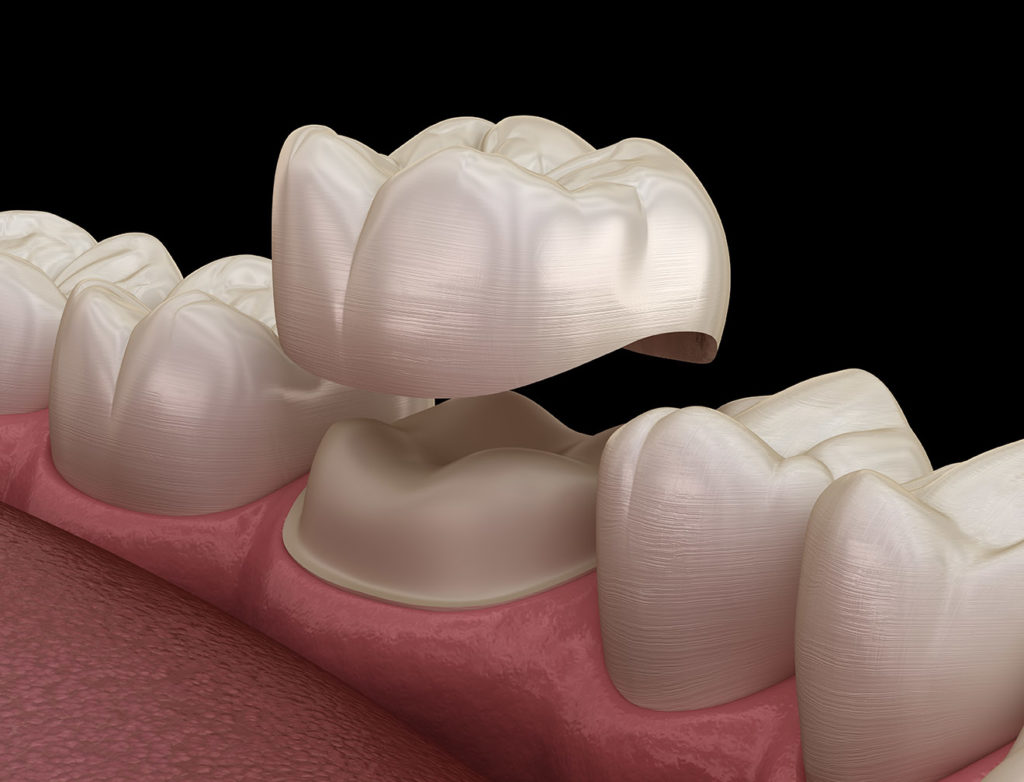
What Is a Dental Crown?
A dental crown is a custom-made cap placed over the entire visible surface of a tooth. It is widely used in restorative dentistry to repair damage, such as a large cavity or a significant break. Crowns are commonly used in combination with other treatments, like a root canal or dental implant.
In some cases, we may recommend a crown as part of preventive dentistry, such as to protect a weakened tooth from breaking. Now, all-porcelain dental crown material also allows them to improve the appearance of a discolored or abnormally shaped tooth while maintaining your smile’s natural appearance.
What Is a Dental Bridge?
Dental bridges are exactly what they sound like—a bridge between missing teeth. They are custom-created to replace one or more missing teeth in your mouth to restore your smile and are often used as an alternative to partial dentures. Unlike partial dentures, dental bridges are permanently cemented into your mouth to provide more security when eating and speaking. Dental bridges are made up of two components:
Pontics
Pontics are artificial teeth that replace the missing or series of teeth in your mouth.
Abutments
Abutments are what the pontics attach to in your mouth. They provide support and stability for your dental bridge. Abutments may be the natural teeth on each side of the missing tooth or small metal posts used in dental-implant-supported bridges.
The number of pontics and abutments varies according to your treatment plan and can be combined to best address your individual needs.
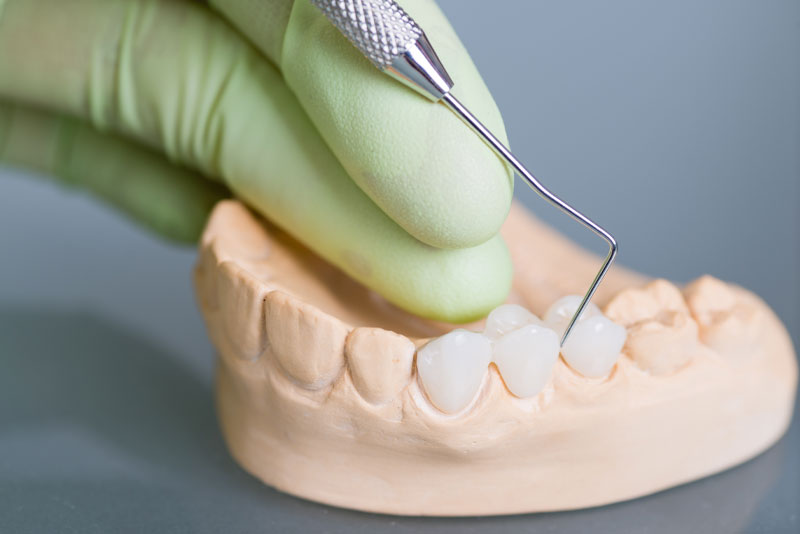
What Are the Benefits of Dental Crowns and Bridges?
Dental crowns and bridges are very versatile. They are a durable way to improve the appearance of your smile and offer several other advantages as well.
Dental crowns work to:
- Prevent additional tooth decay
- Strengthen teeth
- Reshape teeth
- Mask tooth discoloration
- Restore decayed, cracked, or damaged teeth
- Replace silver crowns
Dental bridges work to:
- Restore your smile in a way that looks natural
- Restore your ability to chew food effectively
- Restore your ability to speak clearly and without difficulty, as missing teeth can affect how you enunciate words.
- Prevent teeth adjacent to the space from moving and affecting your bite
- Prevent bone loss in your jaw where you have missing teeth
- Help maintain your facial shape and structure
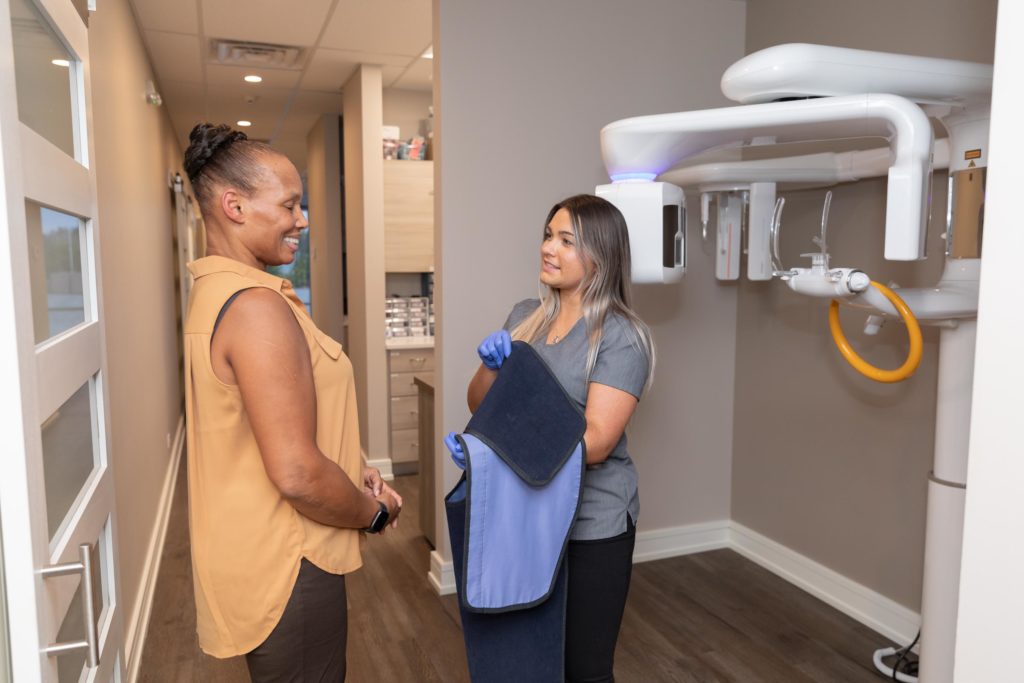
Am I a Good Candidate For Dental Crowns or Bridges?
Candidates for dental crowns and bridges should have good overall health with no underlying health conditions or infections. They should also practice good oral hygiene and avoid dental issues like gum disease.
Candidates for dental crowns include patients who:
- Have cracked, chipped, or broken teeth
- Have teeth that have been weakened by trauma, tooth decay, or extensive dental fillings
- Have severe tooth decay
- Have teeth that are too small or have been eroded away
Candidates for dental bridges include patients who:
- Are missing one or more permanent teeth
- Have healthy abutment teeth or implants that can support the bridge
Ideal candidates will also demonstrate a commitment to maintaining their dental health and have realistic expectations for the results of their procedure.
What Can I Expect From My Dental Crown or Bridge Procedure?
When you come in to see if a dental crown or bridge is the solution to your dental woes, we perform a comprehensive examination of your mouth. In addition to a visual exam, we also take digital X-rays.
In the case of dental crowns, we need to assess the overall health of the affected tooth, and we use X-rays to see the entire structure of the tooth. In the case of dental bridges, the exam is done to assess the health of the teeth and gums surrounding the space in your mouth. We use X-rays to determine if you’ve suffered any bone loss in your jaw due to missing teeth.
Once we’ve determined whether you are a good candidate for a dental crown or bridge, we can get started on the path to a rejuvenated smile.
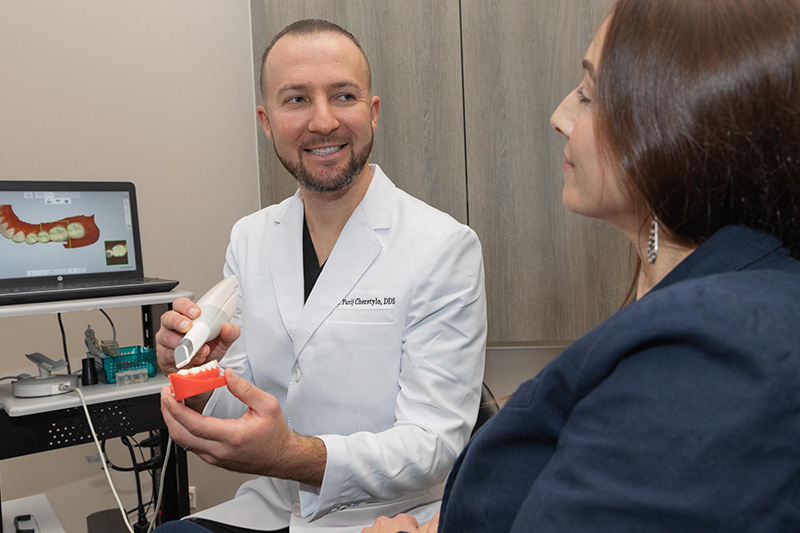
Dental Crown Placement
The process of receiving a dental crown usually takes two appointments. Your tooth is prepared and reshaped during your first appointment to allow the crown to be fitted over it. We take a digital impression of your tooth to get the exact measurements necessary to create it to meet your specific needs. It can take the dental lab a couple of weeks to custom craft it, so we attach a temporary crown in the meantime. After your crown is sent back to our office, you return for your second appointment to have it bonded to your tooth.
Dental Bridge Placement
Dental bridge placement also takes two appointments. If you are getting a traditional bridge, your dentist will prepare and reshape your abutment teeth for placement of a crown (as described above). They will then place a temporary bridge to protect the exposed teeth while the permanent crowns and bridge are created. At your second appointment a couple of weeks later, the permanent, custom-made crowns and bridge are fitted and permanently cemented into your mouth.
If you require an implant-supported bridge, the process takes significantly longer. The implant posts are placed and must heal and integrate into your jawbone before a permanent bridge can be placed. This process takes up to six months, and you will wear a temporary bridge during that time.

How Long Do Dental Crowns and Bridges Last?
Although crowns and dental bridges are made from porcelain, they are very durable. They last for an average of 10 years before needing to be replaced. Practicing good daily dental hygiene and visiting your dentist twice a year for a cleaning and checkup will help promote the longevity of your crowns and bridges.
Ready to Learn More About Dental Crowns and Bridges in Norridge and Schaumburg?
At Royal Dental Care, our expert practitioners stay on the cutting edge of advancements in dental health and restorations. We are continually improving our technology and techniques to provide our patients with the beautiful, healthy, natural-looking teeth they desire.
Call our office today at (773) 232-3929 (Norridge) or (847) 999-7620 (Schaumburg) to schedule an appointment.
FAQs About Dental Crowns and Bridges
Why might I choose a dental crown?
When you come in for a consultation at Royal Dental Care, we will perform a comprehensive exam. Based on our findings, we may recommend a dental crown under certain circumstances, including:
- Replacement of a large filling
- Restoration of a broken or fractured tooth
- Attachment of a dental bridge
- Covering a dental implant
- Covering dark tooth discoloration
- Improving the size and shape of a tooth
- Protecting a tooth that has had root canal therapy
When will I see the results of my dental crown or bridge restoration?
Once your permanent dental crown or bridge is placed, you will see immediate results and enjoy a complete smile with confidence.
Is there anything I can’t eat if I have a dental crown or bridge?
While dental crowns and bridges are made to last, they can still sustain damage. For longer-lasting results, avoid:
- Chewy or sticky foods that can pull the crowns off of your teeth
- Hard or crunchy foods (including ice)
- Popcorn
- Nuts
For the most part, using common sense will help sustain your dental work for a long time. Make sure you brush and floss, and follow your dentist’s instructions for proper care of your dental restorations.
Our Patients Tell The Story Best

Patient – Sylvia
I had some anxiety prior to my work done. I was really fearful of dentists. I’ve been scared since I was a child. It’s been a nightmare. It’s even hard for me to talk about this right now. I get very emotional when I have to talk about this.
Dr. Yurij Cherstylo
So the first time I met Sylvia, I remember thinking two things. One, I was extremely proud that she came in, because she was very, very nervous. I remember when I first saw her, I think she was almost clenching the chair. That’s how nervous she was to be there, and I felt very bad, but I would want to help, and I knew that we could help her.
Patient – Sylvia
When I talked to Dr. Yuri. I knew I came to the right place. He was really warm and caring and he made sure that I didn’t have anxiety that assured me that I am in the right hands and I can trust him.
Dr. Yurij Cherstylo
So there’s a couple things that need to get treated we did some restorations for her. Did some nice crowns for her. And, to support her bite, and to support her smile, we give her a nice cleaning and we restored her back to being healthy, which is very important.
Patient – Sylvia
At the beginning I was feeling a little bit anxious but then as the time went by I got more relaxed and Doctor continuously was assuring me that I’m doing great, that I shouldn’t be afraid, that I should relax and that was really important at that time, because I actually could get through this without being shaky and without the doctor having to stop.
Dr. Yurij Cherstylo
I think Sylvia, she’s still a little bit anxious when should comes in, but she’s so much better. I think the first time compared to the last time as a nine-day difference and last time I saw her was for her check up and a cleaning, and she was still a bit nervous, but I could tell that you know, she was much more comfortable than she initially was. Our goal is to continue working on that and hopefully one day she can come in and almost have no anxiety at all just feel comfortable and feel good about coming here.
Patient – Sylvia
At this time, after so many times coming here, I feel so much more comfortable. I feel so much better knowing that I come to a place where I can actually relax, open my mouth, and put trust in people who will take care of me.

